Special Report
How Ukraine's Newly-Bolstered Tank Army Compares to Russia's
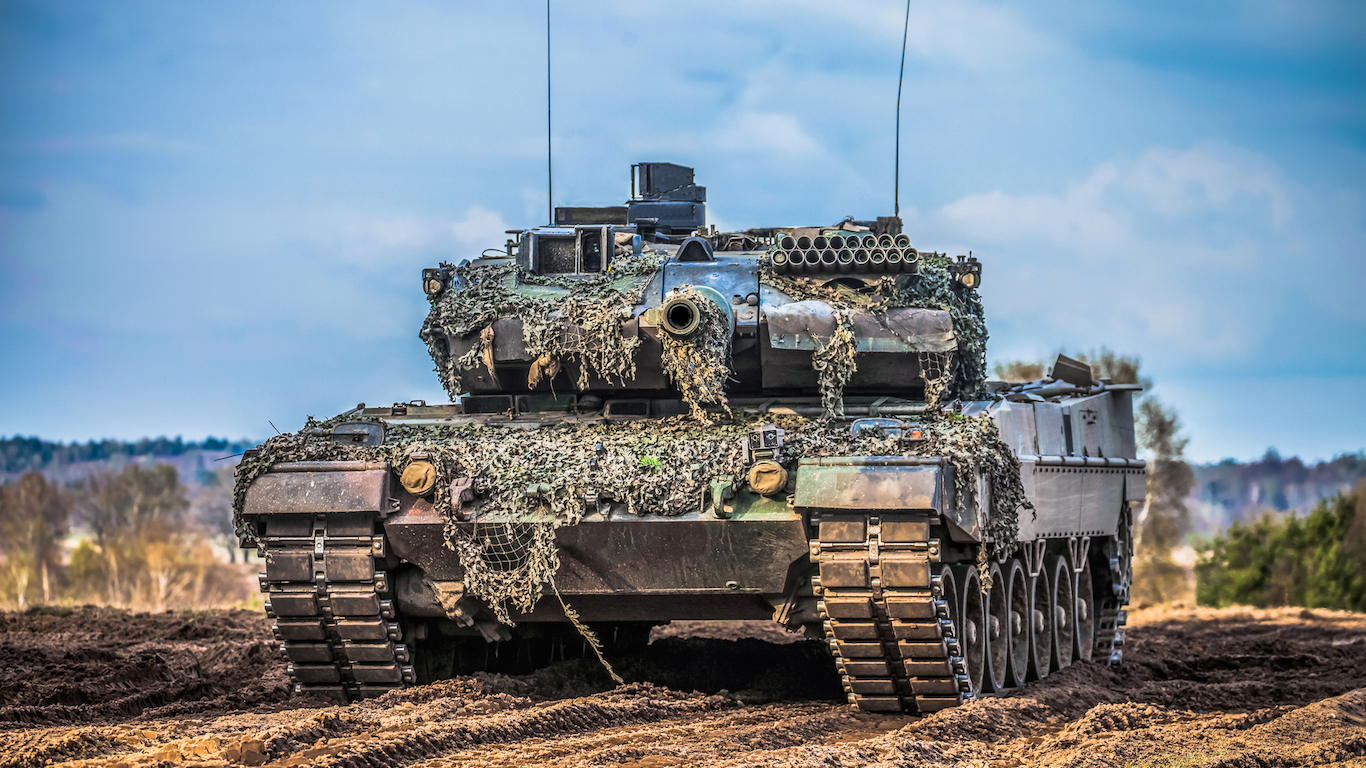
Published:

Following months of repeated requests from Ukrainian President Volodomyr Zelensky, the United States has agreed to send 31 of its M1 Abrams battle tanks to help Ukraine ward off the Russian invasion. The announcement, which came days after the U.K. pledged 14 of its Challenger 2 tanks, was followed by Germany committing to sending 14 Leopard 2 tanks and authorizing allied nations using the Leopard 2 to send their own. (Here is a look at the countries sending the most aid to Ukraine.)
Until now, Ukraine has been fighting the Russian occupation with modernized Soviet-era T-72 tanks, supplied by Poland, Slovakia, the Czech Republic, North Macedonia, and the Netherlands – in addition to several hundred that have been captured from Russian forces. Unlike the T-72s, the new American, British, and German tanks are state of the art machines that offer a combination of mobility and firepower with a high degree of accuracy.
Even though the number of new battle tanks falls short of the 300 requested by Zelensky, Ukrainian officials are hopeful that the new weapons will be instrumental in removing Russian forces from occupied regions and ultimately lead to victory as early as this year. Deliveries of the tanks will not be completed before spring, and whether or not more follow remains to be seen.
Using data from government and defense contractor websites and military media coverage, 24/7 Wall St. compared the tanks that are, or will soon be, deployed on the battlefield in Ukraine. We reviewed the tanks Western governments have recently pledged to Ukraine and the tanks being used by Russian forces.
The tanks are listed in no particular order and include four models either currently being used by, or promised to, Ukraine, and two models being used by the Russians. We also considered two additional battle tanks. The first is a French tank that the government in Paris is reportedly considering sending to Ukraine. On the Russian side, a potential tank said to be the most capable and advanced battle tank in the world is marred by problems that will likely keep it on the sidelines for the foreseeable future.
While NATO tanks may have a slight edge over their Russian counterparts, the tanks being used by the Russian army are still advanced and highly capable machines. (Here is a look at how Russia’s and NATO’s military capabilities compare.)
Click here to see how Ukraine’s newly bolstered tank army compares to Russia’s.
Challenger 2
> Country of origin: United Kingdom
> In use by: Ukraine
> Main artillery: 120 mm rifled gun
> Max speed: 37 mph
> Operational range: 160 – 340 miles
> Engine output: 1,200 horsepower
> Total units on/going to battlefield: 14
The British Challenger 2 tank is designed for battling other tanks. Over its now 30-year lifespan, the Challenger 2 has seen action in Bosnia and Herzegovina, Kosovo, and Iraq, and not a single Challenger has ever been destroyed by enemy forces, according to British military content site Forces Net. The United Kingdom has pledged to send 14 Challenger 2 tanks to Ukraine.
Powered by a 1,200 horsepower diesel engine, the 69 ton Challenger is slightly slower than the American Abrams and German Leopard tanks. The Challenger protects its crew with heavy armor said to be twice as strong as steel. The rifled barrel of the 120 mm gun on the Challenger 2 is unique among NATO tanks, allowing for the use of a specific type of long-range ammunition, according to the UK Defence Journal.
[in-text-ad]
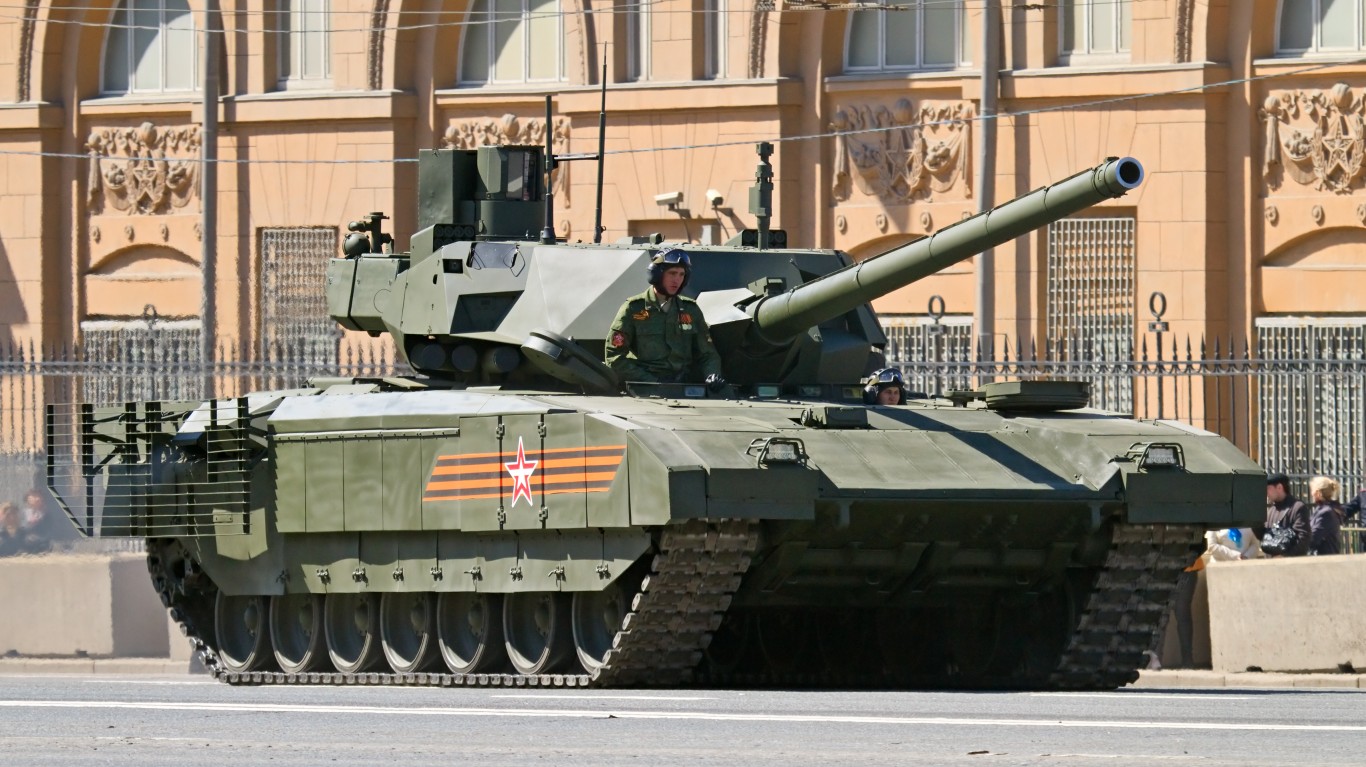
T-14 Armata
> Country of origin: Russia
> In use by: Russia
> Main artillery: 125 mm smoothbore cannon
> Max speed: 56 mph
> Operational range: 311 miles
> Engine output: 1,200 horsepower
> Total units on/going to battlefield: Not available
Introduced in Moscow in 2015, the T-14 Armata tank sounded alarm bells in the West. The British press described it as the most advanced tank in a generation, and a senior army official said, “Without hyperbole, Armata represents the most revolutionary step change in tank design in the last half century.” The T-14 is the first tank to be outfitted with an automatic, uncrewed turret, which supports a 125 mm cannon capable of firing laser-guided missiles. The main armament is also reportedly upgradable to a much larger 152 mm gun.
However, in the years since, production of the T-14 at scale has been plagued with problems, prompting the Kremlin to reduce the planned fleet size. Existing T-14s are in reportedly poor condition and have recurring problems with their engines and thermal imaging systems, and Russian troops have been reluctant to accept them. Deploying these untested machines in Ukraine would be a risk. According to British defense officials, any deployment of T-14s will likely only be for propaganda purposes.
Leclerc
> Country of origin: France
> In use by: Ukraine
> Main artillery: 120 mm smoothbore cannon
> Max speed: 44 mph
> Operational range: 342 miles
> Engine output: 1,500 horsepower
> Total units on/going to battlefield: N/A
French President Emmanuel Macron is under increasing pressure to supply Ukraine with battle tanks, following pledges from Germany, Great Britain, and the United States. France’s defense ministry is said to be continually weighing the possibility of sending some number of the country’s Leclerc battle tanks. Hesitancy from Paris is partially because France has only 222 Leclerc tanks, many of which are not battle ready.
Leclerc tanks were first introduced in 1992, with production ceasing in 2001, according to Army Technology site. The tank features a 120 mm cannon with an automatic loading system capable of firing a variety of explosive and armor piercing ammunition at a rate of 12 rounds per minute. The tank also has a remote controlled 7.62 mm anti-aircraft machine gun, a 12.7 mm machine gun, nine grenade launch tubes, and is capable of engaging six different targets in half a minute. Whether or not any of these machines end up on the battlefield in Ukraine remains to be seen.
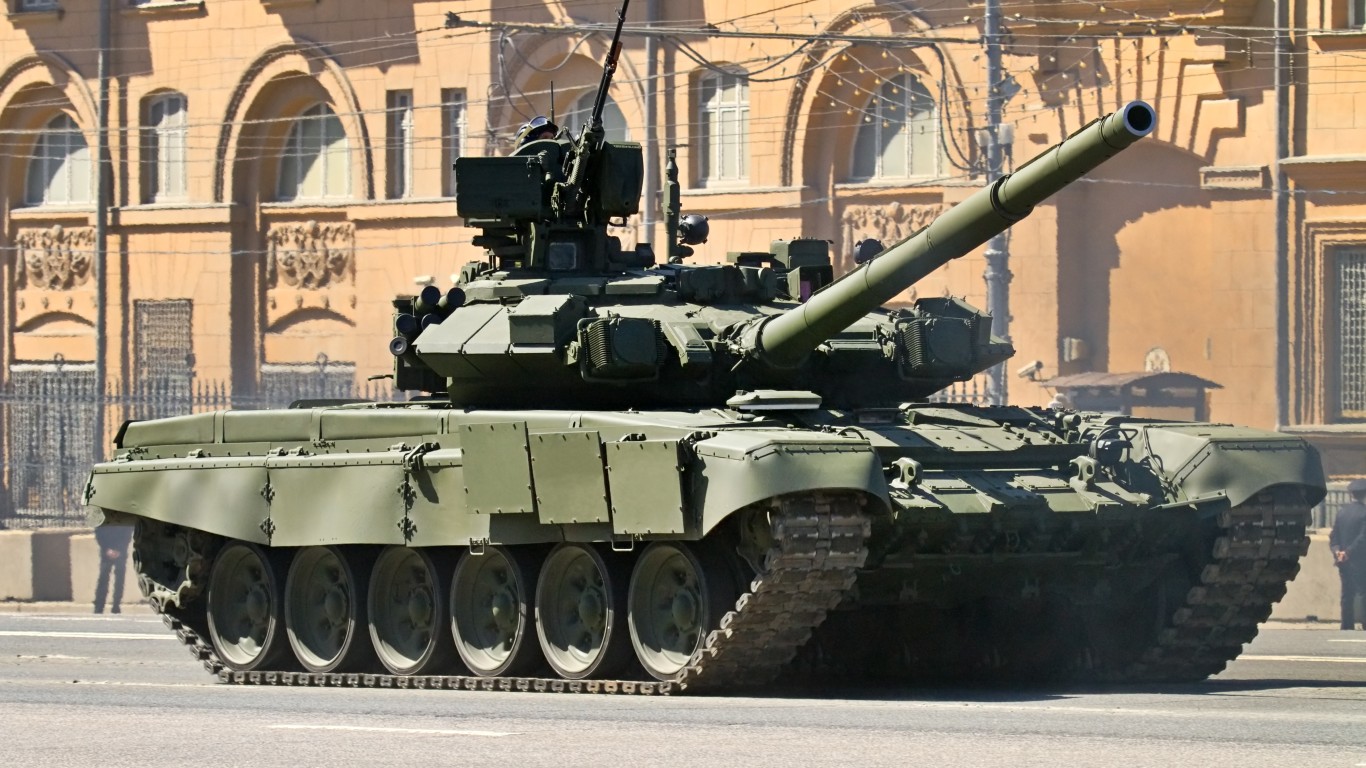
T-90
> Country of origin: Russia
> In use by: Russia
> Main artillery: 125 mm smoothbore cannon
> Max speed: 37 mph
> Operational range: 340 miles
> Engine output: 840-1,250 horsepower
> Total units on/going to battlefield: 1,000
The T-90, in service since 1992, is Russia’s latest, fully operational battle tank. Far more capable than the T-72, T-90 tanks have a 125 mm smoothbore gun that can fire armor piercing rounds, explosive anti-tank rounds, and anti-personnel fragmentation rounds, according to Army Technology. T-90s also have a guided missile system with a maximum range of 4,000 meters.
Defensively, the armor-plated tank is equipped with infrared jammers and is protected against nuclear, chemical, and biological attacks. Though the T-90 is a highly capable and advanced piece of equipment, Russia has lost at least 43 of them to Javelin anti-tank missiles and rocket launchers since the start of the war. Analysts attribute these losses to misuse by the Russian military rather than any specific shortcoming of the tank itself.
[in-text-ad-2]
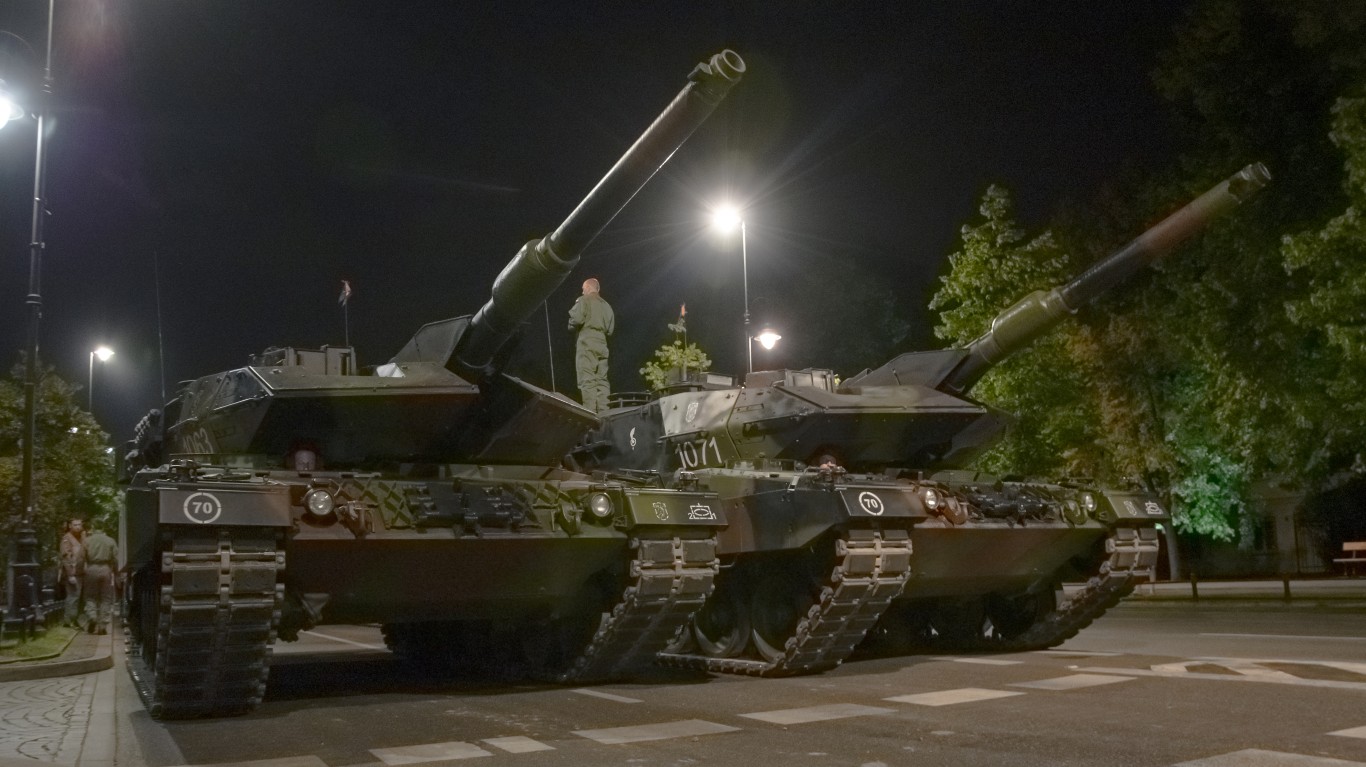
Leopard 2
> Country of origin: Germany
> In use by: Ukraine
> Main artillery: 120 mm smoothbore cannon
> Max speed: 43 mph
> Operational range: 170 miles (avg.)
> Engine output: 1,500 horsepower
> Total units on/going to battlefield: 112
The Leopard 2 is a 55-ton German tank manufactured by Munich based Krauss-Massei Wegmann. Germany and allied nations also using the Leopard 2 intend to eventually send a combined 112 Leopard 2s to Ukraine. For now, Germany and Poland have pledged to send 14 Leopard 2s each, while other countries, including Finland, Norway, Spain, Canada, have pledged smaller numbers.
First introduced in 1979, the Leopard 2 has had several upgrades since its inception, including a landmine protection system and the ability to fire anti-tank guided missiles, according to Army Technology. The tank’s 120 mm gun can accurately engage targets nearly 2 miles away. The Leopard 2 has several advantages over the American made M1 Abrams such as easier to use and running on diesel fuel, which is more widely available. The Leopard is also notable for its speed and maneuverability.
T-72
> Country of origin: Russia
> Belligerent countries using the tank: Ukraine and Russia
> Main artillery: 125 mm smoothbore cannon
> Max speed: 47 mph
> Operational range: 290 miles
> Engine output: 780 horsepower
> Total units on/going to battlefield: 5,500
Until now, Ukraine has been relying on modernized Soviet-era T-72 tanks to defend against the Russian invasion, receiving at least 450 of them from Poland, Slovakia, the Czech Republic, North Macedonia, and the Netherlands. Russia is also employing the T-72s, some of which – as many as 543 by some estimates – Ukraine has captured and redeployed.
With a top speed of 47 miles per hour, T-72s are faster than more modern Western tanks, and unlike the M1 Abrams, which runs on jet fuel, T-72s can operate on much more widely available diesel. Any advantages the T-72 offers, however, are outweighed by the tank’s limitations. Weighing in 45 tons, T-72s offer far less protection than the M1 Abrams. Additionally, the T-72 can not drive in reverse faster than 2 miles per hour, a great limitation in its agility. Since the start of the war, thousands of T-72s are estimated to have been destroyed.
[in-text-ad]
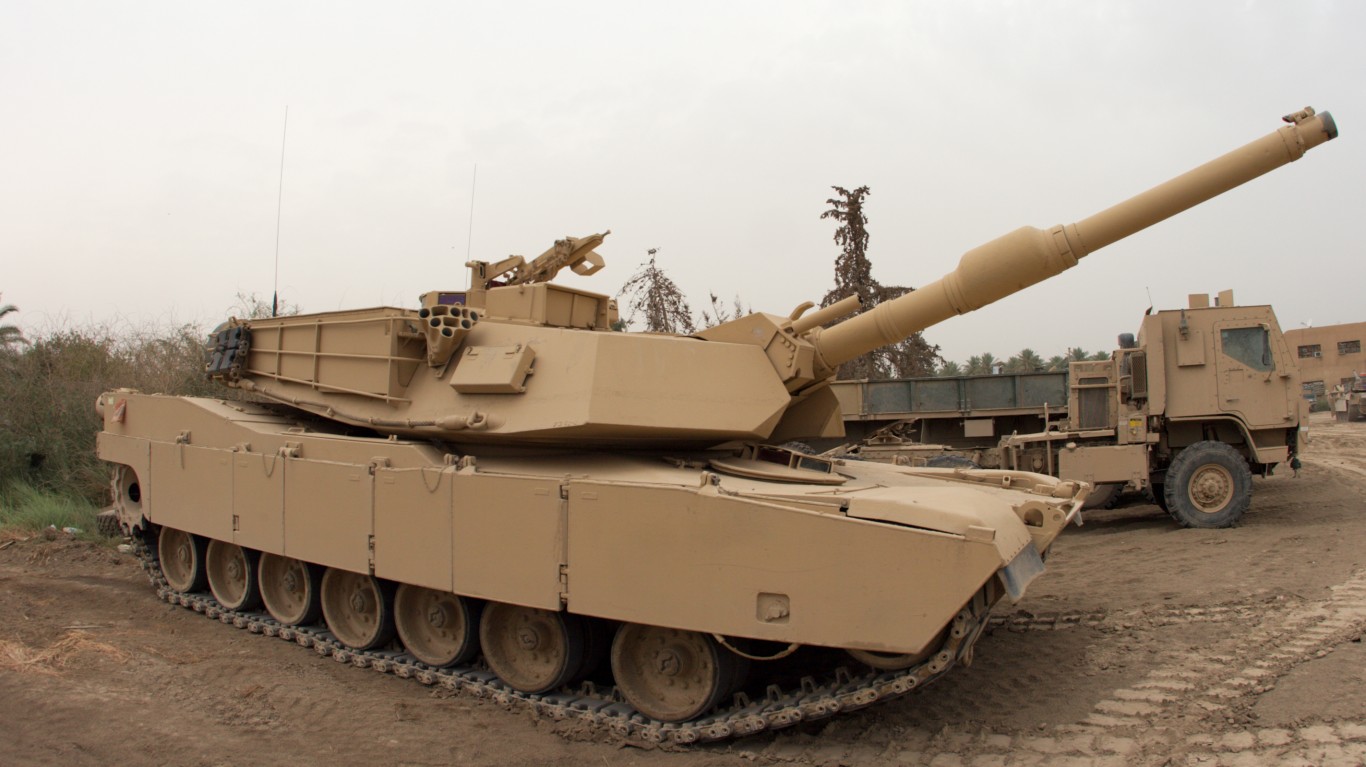
M1 Abrams
> Country of origin: United States
> In use by: Ukraine
> Main artillery: 120 mm smoothbore cannon
> Max speed: 42 mph
> Operational range: 164 – 265 miles
> Engine output: 1,500 horsepower
> Total units on/going to battlefield: 31
The M1 Abrams was first introduced in 1980 and has been battle tested in Iraq, Afghanistan, and Bosnia. Due to a combination of its mobility, targeting capabilities, firepower, and armor, it is considered to be the world’s preeminent tank.
Used by both the U.S. Army and Marine Corps, the latest iteration of the Abrams has a 120 mm cannon and can carry 42 rounds of ammunition, including explosive and anti-personnel shells. It is also equipped with .50 caliber and 7.62 caliber machine guns, and its advanced, computerized firing system has a 95% hit ratio. The tank weighs nearly 74 tons with advanced armor and is also outfitted with an air filter system designed to stand up to chemical and biological attacks. Propelled by jet fuel, the tank has a maximum speed of about 42 miles per hour and can travel about 164 miles off road and 265 miles on road.
The average American spends $17,274 on debit cards a year, and it’s a HUGE mistake. First, debit cards don’t have the same fraud protections as credit cards. Once your money is gone, it’s gone. But more importantly you can actually get something back from this spending every time you swipe.
Issuers are handing out wild bonuses right now. With some you can earn up to 5% back on every purchase. That’s like getting a 5% discount on everything you buy!
Our top pick is kind of hard to imagine. Not only does it pay up to 5% back, it also includes a $200 cash back reward in the first six months, a 0% intro APR, and…. $0 annual fee. It’s quite literally free money for any one that uses a card regularly. Click here to learn more!
Flywheel Publishing has partnered with CardRatings to provide coverage of credit card products. Flywheel Publishing and CardRatings may receive a commission from card issuers.
Thank you for reading! Have some feedback for us?
Contact the 24/7 Wall St. editorial team.